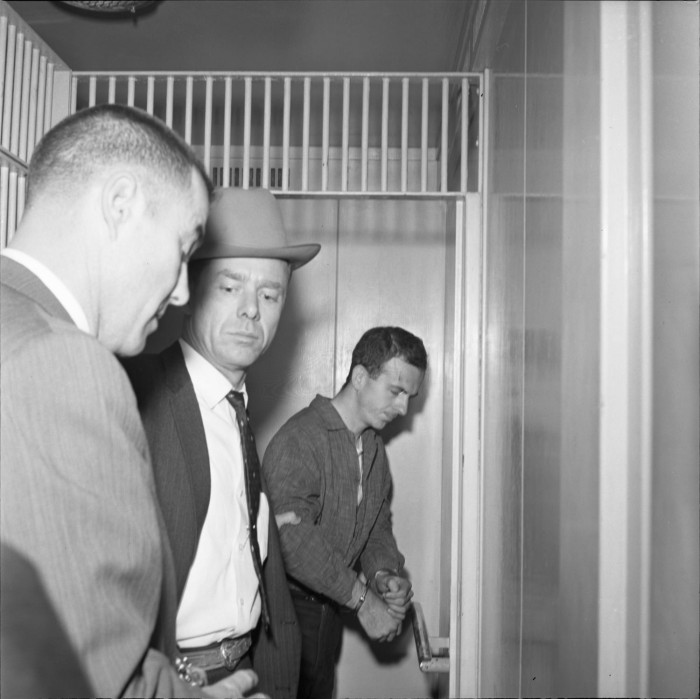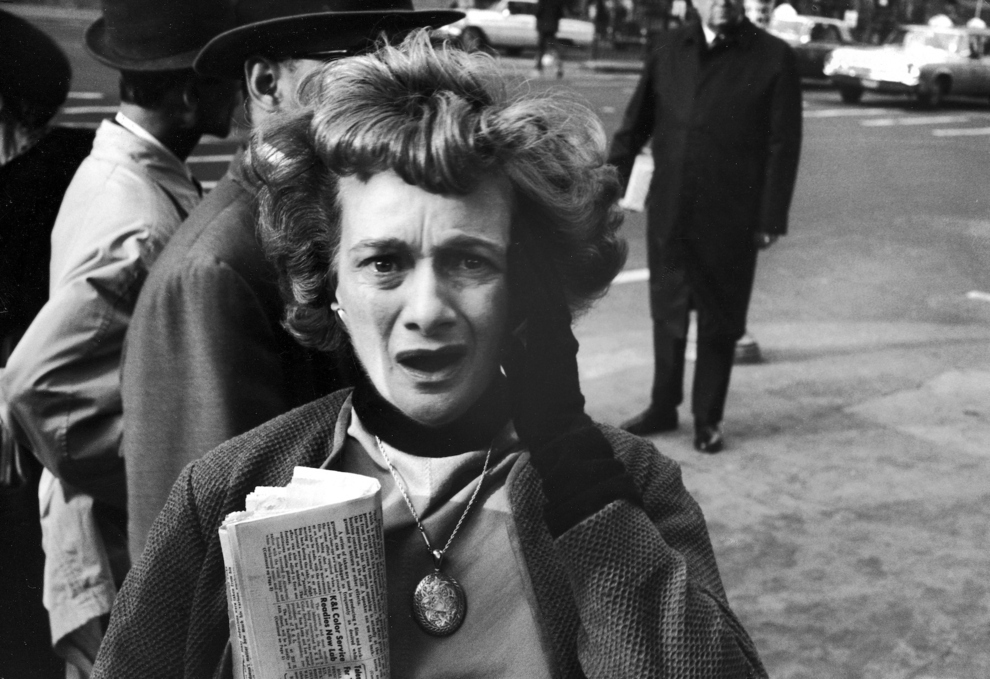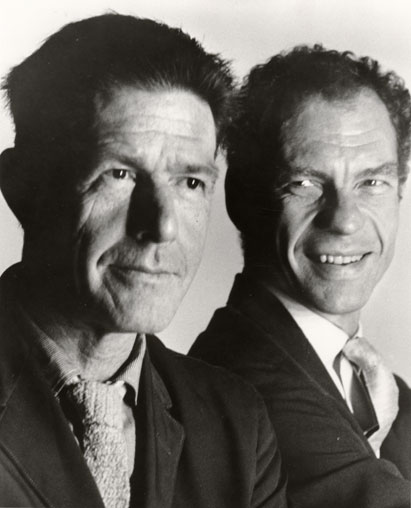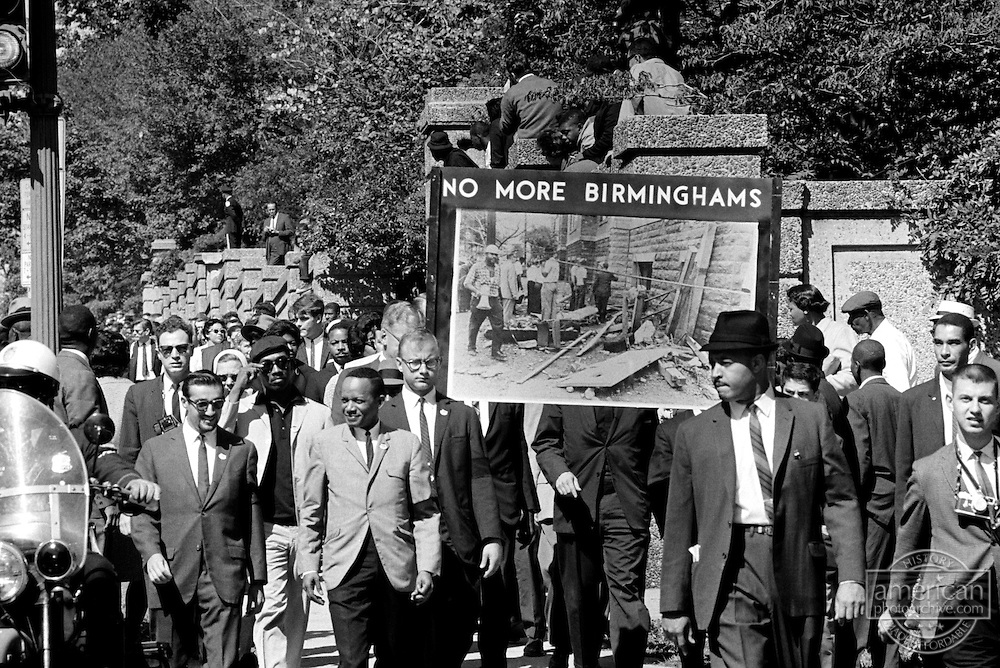
by Victoria Lucas
I found it!
I know the title must seem very arrogant of me. It’s meant to be self-deprecating–my New Year’s Resolution for 1964 is not to take myself so seriously. It doesn’t mean I don’t take seriously the career and presidency of a man who, like Lincoln, is already said to “belong to the ages.” It’s not like I ever met Kennedy in any formal sense.
But (like how many other millions of Americans?) I felt an affinity to him, and in the hours and weeks since his life was so tragically cut short I found myself remembering I did have one small contact with him once. And, clinging to it, I started thinking about my own (even shorter) life’s trajectory and how it may have had some small likeness to his. So I searched through my memorabilia and at last found documentation of that contact.

The date was February 23, 1958. Then a Democratic senator from Massachusetts on the Foreign Relations Committee and mentioned as a possible presidential candidate for 1960, Kennedy was making a short trip to to Tucson, Arizona to give a speech to the Tucson Democratic Party at a dinner on the 22nd and to speak at the Sunday Evening Forum on this evening at the University of Arizona.

It was my senior year in high school, and I had racked my brains to find an excuse to talk to him. All I could think of was to have him autograph my program (which I can’t find). Even though I worked (without pay) for the Cactus Chronicle, the student newspaper of Tucson High School, and for the Tucson Daily Citizen, the afternoon newspaper of Tucson, I had no credentials to ask him questions. I was not there on any assignment; paid reporters would be covering this one. I was too shy to even think of asking him something just as a citizen who couldn’t yet vote (I was still 16).
Nevertheless, I was thrilled to be near Kennedy, whatever the excuse. The program would have looked like the one below, with my scribbling all over it and Kennedy’s (then) upcoming appearance circled.

On the other hand, the photo was by a photographer who had been asked to be there, or who at least knew that he could sell his product. Dick Wisdom was someone who, unlike me, knew what he wanted to do for a living, and was already doing it, and doing it well, in high school.

Unlike me, Dick had come to cover Kennedy, who was big news, and so he showed up at the stage door too. I had no idea he was going to snap Kennedy and me together until I saw the flash and heard the pop. I wasn’t news, and Dick needed Kennedy alone or with someone of importance, so this photograph has never before seen publication.
Despite his success, that night Kennedy demonstrated the fact that he still had not learned how to give a good speech by looking up frequently from his lectern and making enough eye contact with his audience. I was shy too; but even I knew how to give a speech from my high-school course in public speaking. The more I read about Kennedy, the more it was clear to me that politics was not his first choice of career. In fact, I learned that, after he left the Navy in 1944, he had gone to work as a foreign correspondent for Hearst's Chicago Herald-American and New York Journal-American.

Kennedy-watching
In the few short years that I watched and listened, Kennedy’s speechmaking got better and better. He grew more comfortable “pressing the flesh” (as people call shaking hands), kissing babies, answering questions from large audiences and on television. His speech that night was not just a demonstration of his shyness but of his prowess at speech writing. I speculate that it was because his speeches, like those of old-time politicians, were grounded in the written word rather than in spoken, colloquial English, that he had such a hard time making the transition from reading a speech to really delivering one to an audience in a personal way. I was impressed that he had gotten so far and yet was such a shy person at bottom. (There was hope for me!)

Kennedy’s first commercial success at writing began as his Harvard senior thesis on the unreadiness for war he found in England when his father Joseph took him along to the US ambassadorial residence he occupied there in 1938. Based on his personal experience and historical research, it was eventually published as the book Why England Slept in 1940, the title a take off on Churchill’s While England Slept.
His actual career as a journalist was short-lived because his father switched his pressure to become president from his eldest brother Joe Jr. to him when Joe died in WWII, as JFK almost had himself. Everybody knows of the film released last year about Kennedy’s near-death experience on a Navy motor-torpedo boat named PT 109, and probably about the book of the same name written by Robert J. Donovan that prompted the making of the film.
I didn’t see the movie and didn’t read the book, perhaps because Kennedy didn’t write the book or appear in the movie, and he doesn’t have much to say about the whole incident when asked. I did, however, read Profiles in Courage, which some say was ghostwritten. (I wouldn’t know.) I liked his ideas. I saw him as intelligent and articulate, and as someone who cared about people.

Kennedy’s interview style, by the way, was also, it seems to me, influenced by his own experience doing interviews as a reporter. He answered questions thoughtfully and did not evade them. He never attacked or used reporters the way other presidents–Teddy Roosevelt, for instance–did.

And pretty clearly writing about historic events such as the Potsdam Conference gave him a historical perspective that he never lost. I managed to get hold of the speech he gave the day before I saw him in Tucson. He addressed members of the Tucson Democratic Party at a dinner on the 22nd, playing in part on the fact that it was Washington’s Birthday:
“Think back, if you will, to February 22, 1796. For 13 years, the Birthday of President Washington had been honored in the new nation. …But in 1796 no bells were rung or bonfires lit. The cannons which were to be fired were spiked by angry citizens. Washington, said one newspaper, was "The American Caesar. . . the stepfather of his country.” …The cause for this change in the public's affection was principally President Washington's approval of the Jay Treaty with Great Britain. Popular opinion which favored the French in their war with the British resented the concessions we had made and the grievances the British had failed to meet. But President Washington preferred an unjust treaty to a war which his young and still weak country could not survive. He longed to retire at the close of his second term with the reverence of a united country. But he chose instead to endure popular abuse rather than endanger the existence of those who were attacking him. It may well have been his finest hour.
We urgently need today to remember this example of Washington's courage and devotion. The popular path is not always the best one, even in a democracy.”
As usual, Kennedy focused on displaying courage and finding precedents in history, not on attacking others. He attacked what a “Republican friend” had said in Phoenix, but declined to name him and only disagreed with his words. I attribute this too to his brush with journalism–one may attack the other paper in town, but a reporter usually leaves such attacks to newspaper editors and owners, because no reporter ever knows for whom he or she will work tomorrow.
Abandoning journalism
Perhaps Kennedy learned and grew from his experiences as a foreign correspondent. Perhaps he still missed those days, even well into his political career.
I, on the other hand, do not miss my stint as a journalist. Like Kennedy's my tenure as a reporter was short-lived, but the reasons for that aborted trajectory are quite different. It's an experience that highlights a few things about newspaper practices, journalism education, and (you’ve seen this before in these columns) sexism.
It's worthy of an article all its own. Next month.

![[January 6, 1964] JFK & me](https://galacticjourney.org/wp-content/uploads/2019/01/640104arelnkennedy-672x372.jpg)

![[December 5, 1963] A Composer After My Own Heart (A theme song for <i>Dr. Who</i>)](https://galacticjourney.org/wp-content/uploads/2018/12/631205delia_derbyshire-672x372.jpg)









![[November 22, 1963 cont.] Murder charge for Lee Harvey Oswald](https://galacticjourney.org/wp-content/uploads/2018/11/631123grief3-672x372.jpg)


![[November 7, 1963] This Performance Not Wholly Silence (John Cage and his art)](https://galacticjourney.org/wp-content/uploads/2018/11/631107cage1947-672x372.jpg)






![[October 4, 1963] A Story Turned Inside Out—the movie of <i>Burning Court</i>](https://galacticjourney.org/wp-content/uploads/2018/10/631005poster-474x372.jpg)



.jpg)


.jpg)
.jpg)


![[September 23, 1963] Small Comforts (October 1963 <i>Fantastic</i>)](https://galacticjourney.org/wp-content/uploads/2018/09/630923cover-541x372.jpg)















































